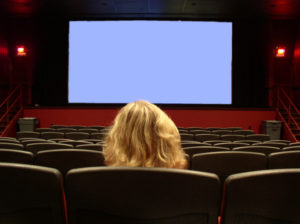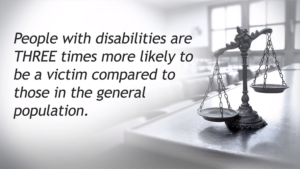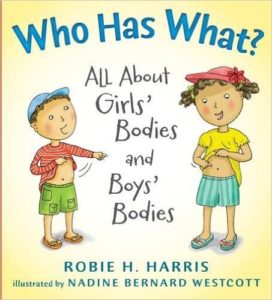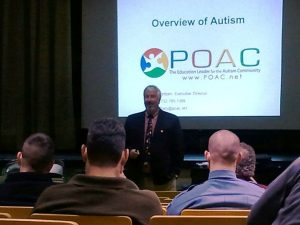 “Here’s what parents and educators must ask themselves every day — is this behavior that may be cute at 5 years old still going to be cute, or socially acceptable, or legal at 15 years old, at 25 years old?”
“Here’s what parents and educators must ask themselves every day — is this behavior that may be cute at 5 years old still going to be cute, or socially acceptable, or legal at 15 years old, at 25 years old?”
It was Middle School Day at Medieval Times in Lyndhurst, NJ, and I was the chaperone for my son’s “self-contained” autism class. Christopher’s entire school went to the show, which included two autism classes. During the intermission, I was asked to take eight teenage boys — all on the autism spectrum — into the restroom, as I was the only adult male on the trip. There were eight urinals in the bathroom, and seven of the boys lined up and lowered their pants and underwear down to their knees (or lower) to use them.
There I was with my son and his classmates — seven hairy tushes in a row for the world to see. There were laughs and questions from students and other individuals who entered the bathroom after us. And then there was me just trying to get the boys to pull up their pants (and wishing they didn’t have free soda refills).
I share this story at many of my lectures and it always gets a chuckle; but after the laughter, parents often share stories of their own sons engaging in similar behavior at school and in public restrooms with horrible — and sometimes tragic — results.
Making Sense of the Hidden Curriculum
There’s a very specific culture and etiquette in the men’s room, and we need to teach our boys proper bathroom behavior and rules. If we don’t, they can become vulnerable — to teasing, to bullying, or even to victimization. Knowing how far down to pull one’s pants is only the start; for instance, our boys also need to know which urinal to use if there is another person in the restroom. Most of our children are taught to line up. This doesn’t work in the men’s room. Here’s what I mean:
 Imagine a woman is sitting alone in a 500 seat movie theater, and every seat but hers is empty. Right before the movie starts, in walks an unknown man. Out of the available 499 empty seats, the man sits directly next to the woman.
Imagine a woman is sitting alone in a 500 seat movie theater, and every seat but hers is empty. Right before the movie starts, in walks an unknown man. Out of the available 499 empty seats, the man sits directly next to the woman.
Creepy, right? This is tantamount to how a typical male would feel if another man entered the restroom and walked by all the empty urinals to stand at the one next him. Individuals with Autism Spectrum Disorder (ASD) don’t understand that there is a certain “creep factor” that they have be aware of. Even though every non-autistic person seems to know about this hidden curriculum, these rules need to be taught to children on the spectrum.
The Horrifying Truth
Teaching our kids these basic social practices is crucial for their own safety. Consider this – between 40 and 70% of individuals with ASD are sexually abused by predators. (Sobsey & Richard, 1994). Equally alarming, 49% of people with developmental disabilities who are victims of sexual assault will experience 10 or more abusive incidents (Valenti-Heim, D. & Schwartz, L., 1995). Among adults who are developmentally disabled, as many as 83% of females and 32% of males are victims of sexual assault (Johnson, I. & Sigler R., 2000).
These shocking statistics indicate that individuals on the spectrum are perfect victims. They don’t understand the “creep factor,” and they tend to be rule-governed. We need to be very clear about what rules we are teaching, especially when compliance is concerned.
Many individuals with ASD don’t understand the consequences of their actions. Unless they have been taught specific rules, many children and adults with ASD would comply with inappropriate requests that could lead to violation.
An example of an inappropriate request that individuals with ASD may comply with could be, “Hey, it’s hot in here. Let’s take our shirts off.”
To Educate Our Children, We Must First Educate Ourselves
Parents and teachers are the primary sources of information and skill acquisition. Many parents – myself included — can’t or don’t want to see our children as sexual beings. We often say, “not my child” when it comes to the horrifying statistics mentioned above. Parents of more severely impacted and nonverbal children often feel that someone they know and trust is always with their child and keeping him or her safe, and that the bad things must be happening to more independent children who are often on their own.
The parents of these more independent and verbal children may think their children tell them everything, and that it must be those nonverbal children that all the bad things are happening to. If we want to keep our children out of harm’s way, we cannot continue to make assumptions that they could never be victimized; the hidden curriculum needs to be taught to children and adults across the entire spectrum in order to keep them safe.
Here is the good news: we can teach our kids anything. We have over 70 years of science by our side to help us educate them, and there are some excellent curricula for teaching sex education to individuals with autism. It’s never too early to start; unfortunately though, most individuals don’t get this information until after an incident has already occurred — until after a student has engaged in inappropriate behavior such as touching themselves or someone else or breaking the rules, law, or other parts of the hidden curriculum.

As a certified law enforcement instructor, I have trained over 65,000 first responders in autism recognition and response. When I first started, I trained policemen, then firefighters and EMS personnel. More recently I’ve trained prison guards. I didn’t go looking for this kind of work; prisons and juvenile detention centers have reached out to POAC, as individuals with ASD are now entering the prison system for some of the reasons mentioned above.
Prison is the last thing our autism population needs to deal with, so I was devastated the first time a juvenile detention center contacted me with a request for training. I asked how it was possible that children with autism could be in detention. The reply was simple — once a sexual line has been crossed, it’s nearly impossible to stop the legal process.
 In light of this terrifying fact, people are starting to realize that individuals on the spectrum need to be treated differently than others in these cases. THE ARC is spearheading a national initiative called Pathways to Justice, which helps advocate for developmentally disabled individuals who have entered the criminal justice system.
In light of this terrifying fact, people are starting to realize that individuals on the spectrum need to be treated differently than others in these cases. THE ARC is spearheading a national initiative called Pathways to Justice, which helps advocate for developmentally disabled individuals who have entered the criminal justice system.
This is a step in the right direction towards helping individuals on the spectrum, but it’s even more crucial to give students with ASD the education and skills needed to avoid these situations in the first place.
So, Where and How Do We Begin?
 We start the sex education process in preschool. This may seem early, but preschool is the ideal time to begin teaching children with autism simple discriminations — such as the difference between boys and girls, and “yes” and “no.” We teach young children how to say “no,” reinforcing their use of the word. Eventually, we teach that the parts of their bodies that are covered by their bathing suits are not to be touched by others.
We start the sex education process in preschool. This may seem early, but preschool is the ideal time to begin teaching children with autism simple discriminations — such as the difference between boys and girls, and “yes” and “no.” We teach young children how to say “no,” reinforcing their use of the word. Eventually, we teach that the parts of their bodies that are covered by their bathing suits are not to be touched by others.
Again, these skills are so imperative that we must dedicate time to educating them with sound teaching techniques and bring them to mastery.
As our boys get older, we must get them out of sweatpants. Sweatpants can be very helpful in the toilet training process, but once this is achieved, boys need to wear pants with belts like their typically developing peers. Aside from raising issues of social acceptance, wearing sweatpants could give easy access to predators. They also allow for sensory input that is not appropriate in public situations.
Taking the Next Steps
Eventually, we must teach our kids about inappropriate touching — how to avoid being touched and how not to touch others. Here’s what parents and educators must ask themselves every day — is this behavior that may be cute at 5 years old still going to be cute, or socially acceptable, or legal at 15 years old, at 25 years old? If the answer is no, we must put a stop to it at age 5.
Common examples of this kind of behavior are hugging, kissing, touching, or smelling others. Likewise, you shouldn’t tolerate behavior from your child or student with ASD that you wouldn’t tolerate from a typically developing child. We must continue to teach our children the difference between trusted individuals and strangers, and show them how to recognize dangers both in the real world and on the internet.
Teaching these skills may not be easy to think about and they can even be embarrassing, but we have to start somewhere — and practice makes perfect. Let me leave you with an image:
I was once on my way to give a lecture on Sexuality and Keeping Children Safe to a group of 135 school nurses. I was nervous because I knew my strict upbringing would make it difficult to use even the most clinical language in front of just one woman, let alone a roomful of them. So I practiced saying the words over and over, experimenting with tone and inflection — in the car. Out loud. With the windows open.
A woman was sitting in the car next to me at a red light staring at me in horror and disgust. All I could think to say as she pulled away was, “It’s OK! I’m a teacher!” Needless to say, I have since put on my “big boy pants” (above my knees) and left my embarrassment at the door.
POAC Can Help
 Every year I train thousands of police and first responders on autism recognition and response. POAC gives school assemblies to thousands of students every year on how to befriend someone with autism. We are doing our best to make the communities around our children and adults with autism safer, more welcoming places.
Every year I train thousands of police and first responders on autism recognition and response. POAC gives school assemblies to thousands of students every year on how to befriend someone with autism. We are doing our best to make the communities around our children and adults with autism safer, more welcoming places.
However, that’s not enough; POAC offers free training to parents and educators on all of these safety and sexuality issues. We must give the individuals with ASD themselves the knowledge, skills, and power to recognize and avoid danger and keep themselves safe.



Join the Conversation